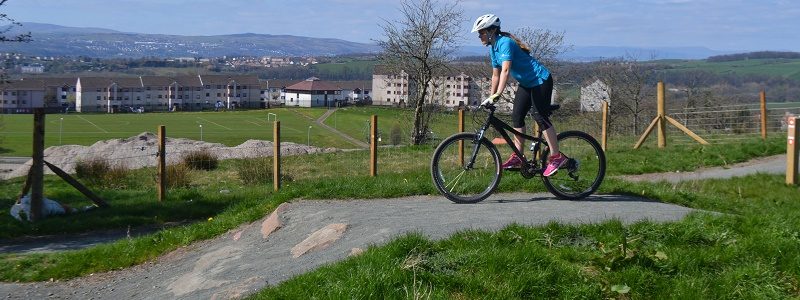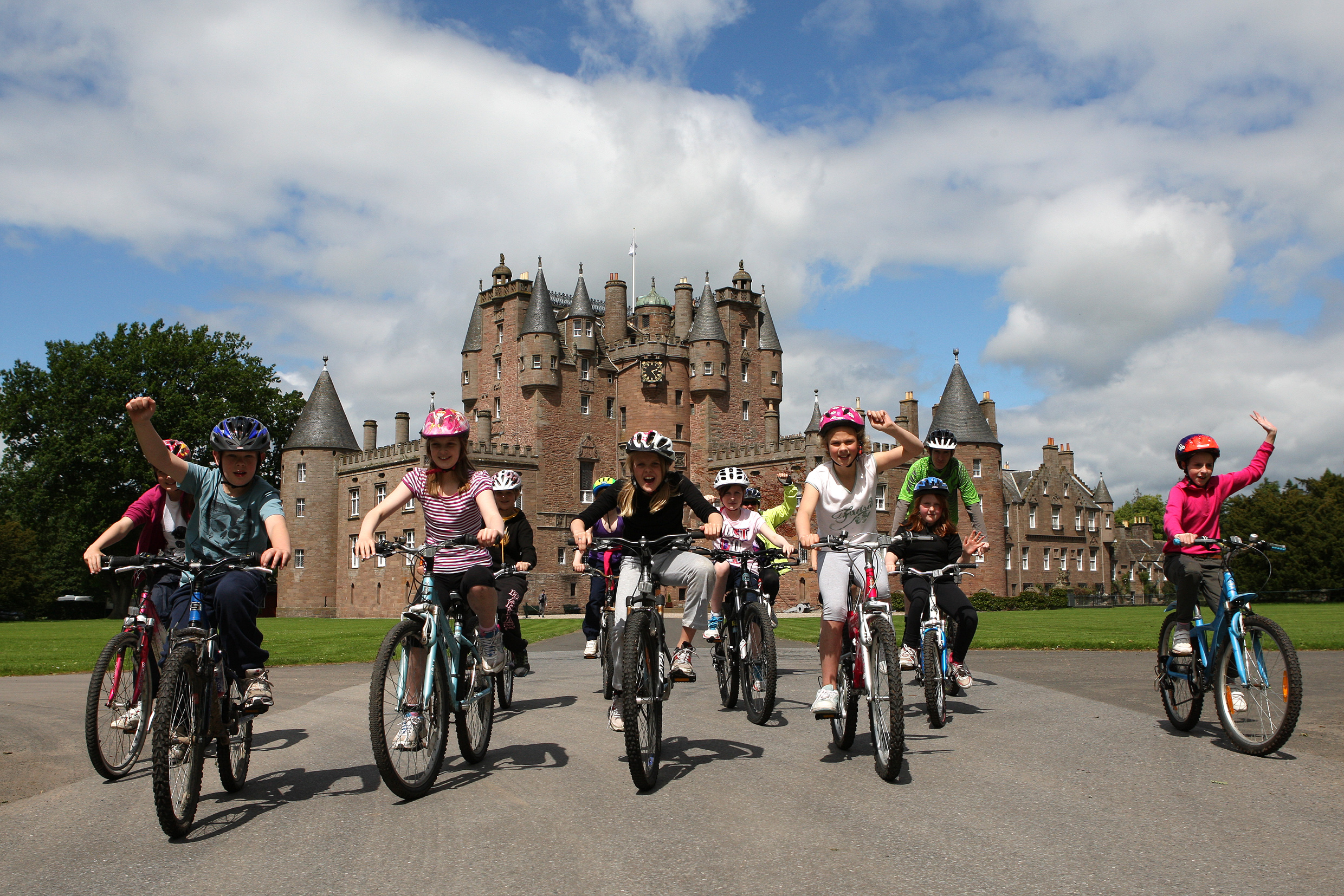By Bridget Finton, People & Places Unit, Scottish Natural Heritage
(in Volume 26)
Scotland’s stunning scenery, vast network of off-road paths and trails and progressive outdoor access legislation make it one of the best locations in the world to go mountain biking. With these attributes, and growing recognition of the range of benefits that flow from getting more people outdoors and active, an innovative partnership project is helping turn policy into practice.
An estimated 1.4mill Scots own a mountain bike and ownership is continuing to increase. Off-road biking (not necessarily into the mountains) provides a fantastic opportunity to introduce cycling for ‘fun’ into people’s lives. Indeed, research has indicated that 60% of people who commute by bike started off as recreational cyclists showing that encouraging more off-road-biking could be a very effective method of increasing participation in cycling for ‘function’.
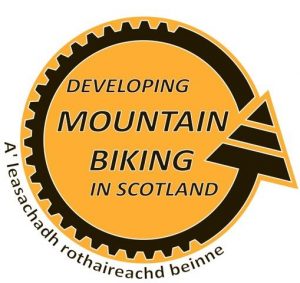 Developing Mountain Biking in Scotland (DMBinS) is a partnership project which aims to build on existing attributes and sustainably grow the activity. The project’s main function is to oversee the delivery the world’s first mountain bike strategy – ‘The Sustainable Development of Mountain Biking in Scotland: a national strategic framework’ (the Framework). The Framework was devised by the Scottish Mountain Biking Development Consortium (the Consortium) and published in 2009. The Consortium brings together key cycling interests from the public and voluntary sectors and was established in recognition of the need for a set of common objectives and a means by which to prioritise future investment in the sustainable development of off-road cycling provision. From the outset, the Consortium – and the Framework – adopted a broad definition of ‘mountain biking’ which covers the extreme end of the sport right through to using a hybrid bike off-road for leisure purposes. Scottish Natural Heritage’s (SNH) interest is centred around sustainable land use and encouraging greater and wider participation as a way for people to enjoy the outdoors, achieve health benefits and support the Scottish economy, which sits comfortably alongside the remits of other Consortium member organisations such as sportscotland, Scottish Enterprise, Forestry Commission Scotland and Scottish Cycling.
Developing Mountain Biking in Scotland (DMBinS) is a partnership project which aims to build on existing attributes and sustainably grow the activity. The project’s main function is to oversee the delivery the world’s first mountain bike strategy – ‘The Sustainable Development of Mountain Biking in Scotland: a national strategic framework’ (the Framework). The Framework was devised by the Scottish Mountain Biking Development Consortium (the Consortium) and published in 2009. The Consortium brings together key cycling interests from the public and voluntary sectors and was established in recognition of the need for a set of common objectives and a means by which to prioritise future investment in the sustainable development of off-road cycling provision. From the outset, the Consortium – and the Framework – adopted a broad definition of ‘mountain biking’ which covers the extreme end of the sport right through to using a hybrid bike off-road for leisure purposes. Scottish Natural Heritage’s (SNH) interest is centred around sustainable land use and encouraging greater and wider participation as a way for people to enjoy the outdoors, achieve health benefits and support the Scottish economy, which sits comfortably alongside the remits of other Consortium member organisations such as sportscotland, Scottish Enterprise, Forestry Commission Scotland and Scottish Cycling.
The function of the Consortium is seen as a good example of the way the Scottish Government wants to see cross-sector partnerships work, providing a planning and steering mechanism for integrated delivery of multiple benefits aimed at achieving a more successful Scotland. So what has Scotland got to build on in terms of boosting participation in, and sharing the benefits from, mountain biking? Well, our fantastic natural assets for starters, and our progressive access legislation which means that tracks and trails from the urban fringe to the wild and rugged are available for use – as long as it’s responsible to do so.
Some achievements to date
DMBinS has been in operation for six years now, and its establishment flowed from the publication of the Framework. Hosted by Scottish Cycling, the governing body of cyclesport, and funded by the four key public sector partners of the Consortium, the project’s work plan covers the three overarching objectives of the Framework:
- improved health and well-being through increased participation
- tourism and other aspects of economic development
- sporting development and success
In encouraging the development of improvements to local infrastructure and information, the project has been instrumental in cultivating regional mountain biking ‘Development Clusters’. There are currently five clusters at various stages of development and the overall aim is for them to provide strategic direction and co-ordination of future work so that the potential of each area is maximised. DMBinS has played a lead role in establishing the cluster groups and even though each region needs to determine its own priorities, the project’s involvement means that there is a consistent approach and good practice is shared. An early stage for each cluster has been an audit of its mountain biking assets and stakeholders, and the development of a Cluster Plan which identifies key opportunities and a direction of travel. Some of the achievements of the clusters to date include:
- publication of sets of Route Cards to promote sustainable routes
- co-ordination of a regional youth series in Tayside & Fife, with local sponsorship and grant funding
- joint funding of research into the economic potential of mountain biking in Highland, which helped draft the Cluster Plan
- training in the planning of mountain biking events through a local college
- production of the Highland e-guide, promoting a range of trail centres and natural routes
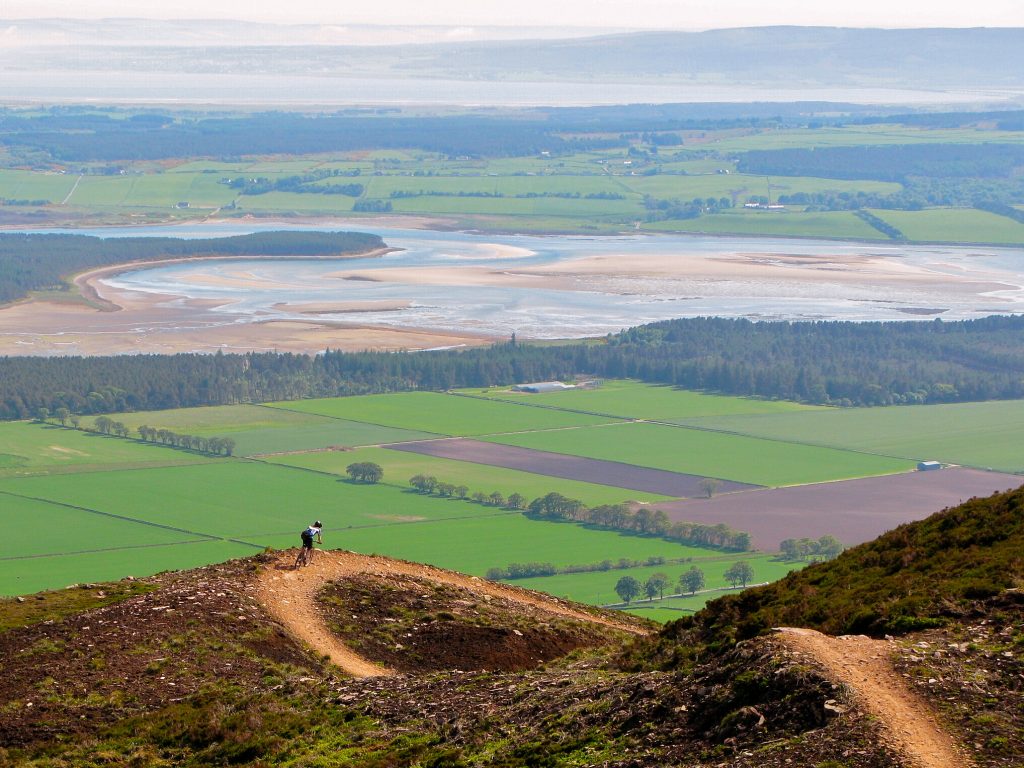 The clusters have stimulated new effort and emphasis, and being part of a cluster has helped member organisations access a range of funding sources for facility development and the running of events aimed at encouraging more participation.
The clusters have stimulated new effort and emphasis, and being part of a cluster has helped member organisations access a range of funding sources for facility development and the running of events aimed at encouraging more participation.
As well as facilitating the cluster approach, DMBinS has worked hard at establishing itself as a one-stop-shop for information via its website, and through its media contacts. dmbins.com has information for two key audiences:
- for people who want to get into mountain biking – they can find information on how to get started, where to ride and how to find people to ride with;
- for those who are involved in encouraging greater participation or improving local facilities – information on promotion and marketing, trail development and applying for funding is available and case studies enable the sharing of good practice.
Specific publications that DMBinS has lead on include ‘Do the Ride Thing’, which builds on the guidance in the Scottish Outdoor Access Code and provides advice on responsible behaviour in a range of settings, and ‘Good Practice Guidelines for mountain bike guides, instructors and coaches’. The website also holds information on the biennial conferences organised by DMBinS which have been used to raise the profile of the work that’s going on to maintain Scotland’s global reputation for the provision of mountain biking opportunities, ranging from routes around towns and cities to world class trail centres.
Next steps
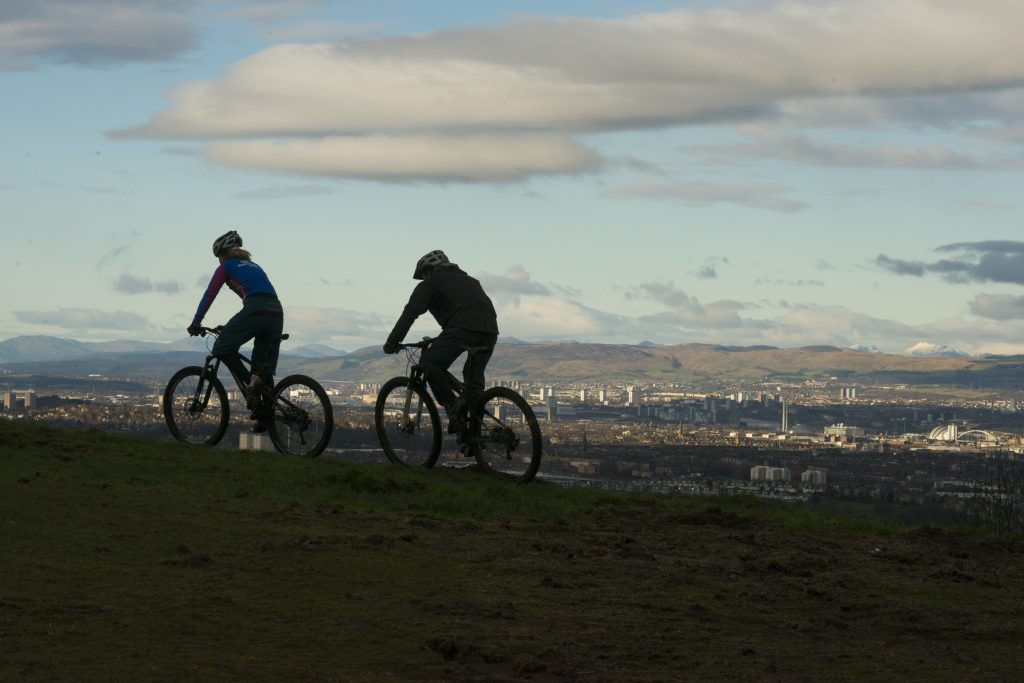 With a refreshed national Framework about to be published, the DMBinS project is preparing a third 3-year delivery programme which will see it continue to provide an effective cross-cutting agency role in what is a rather cluttered landscape of cycling interests and organisations. Maximising mountain biking’s potential to contribute to a successful Scotland is the common goal of the funding partners, and the dedicated resource provided by the project is helping to steer the sustainable development of the activity. Responding to the physical activity for health agenda, a key element in the new programme will be a national participation scheme which will be aimed at areas of low current participation. Linked to the new Level 1 leadership award, the scheme will focus on engaging with under-represented groups in and around large population centres, and will seek to build confidence and awareness of the extensive off-road cycling opportunities that exist close to most people’s homes. DMBinS will also develop ways for bikers to get involved in managing their local routes, including through the promotion of an annual ‘Take Care of Your Trails’ weekend, which was piloted in 2015.
With a refreshed national Framework about to be published, the DMBinS project is preparing a third 3-year delivery programme which will see it continue to provide an effective cross-cutting agency role in what is a rather cluttered landscape of cycling interests and organisations. Maximising mountain biking’s potential to contribute to a successful Scotland is the common goal of the funding partners, and the dedicated resource provided by the project is helping to steer the sustainable development of the activity. Responding to the physical activity for health agenda, a key element in the new programme will be a national participation scheme which will be aimed at areas of low current participation. Linked to the new Level 1 leadership award, the scheme will focus on engaging with under-represented groups in and around large population centres, and will seek to build confidence and awareness of the extensive off-road cycling opportunities that exist close to most people’s homes. DMBinS will also develop ways for bikers to get involved in managing their local routes, including through the promotion of an annual ‘Take Care of Your Trails’ weekend, which was piloted in 2015.
Today’s agenda of pressing health issues and the need for preventative action provide an opportunity to promote investment in off-road biking. The DMBinS project is presenting an integrated case for the range of benefits public access to the outdoors can bring, including recognition that increasing people’s interest in the sporting and recreational activity may well lead to increased modal shift to the bike for functional trips too.
For more info on Developing Mountain Biking in Scotland see: – http://www.dmbins.com/
